Closing Boldt Castle is not easy...
by: Jessica Phinney
Editor’s Note: After seeing how those on Heart Island close Boldt Castle… we think the rest of us have little to complain about!
These pictures were taken over a period of two weeks in late October 2018, just after the Castle closed for visitors on October 21. Although almost buttoned-up, Sean Godfrey’s maintenance crew is still on Heart Island today and will remain as long as weather and water levels permit. Closing is a “day to day” operation
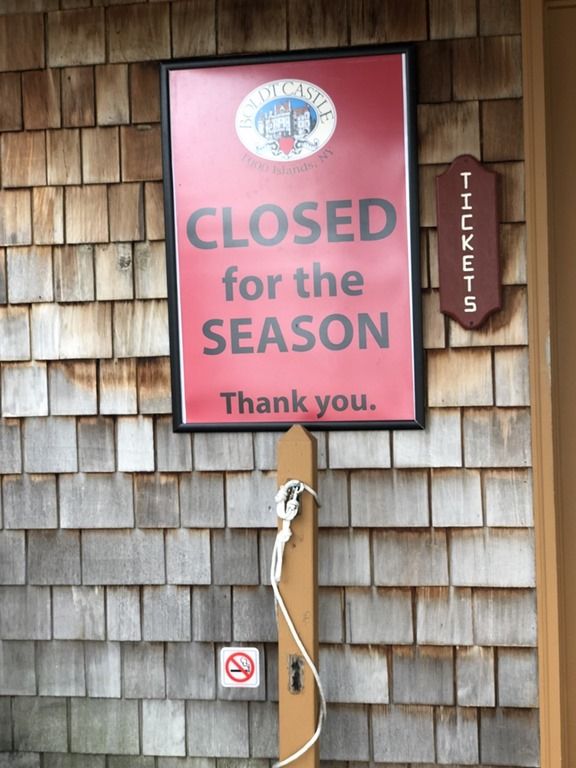
In 1895 George Boldt purchased 5-acre Hart Island from the late Congressman Elizur Kirke Hart’s estate. At the time, Boldt had spent just two summers on the River (a love affair we can all relate to!). Boldt later changed the spelling of the Island from Hart to Heart, although stags or Harts appear throughout the island. It is worth noting that George was a big fan of symbolism. On your next trip over, don’t be surprised if Hearts, Harts, Clover’s and his lucky number 13 appear where you would least expect…
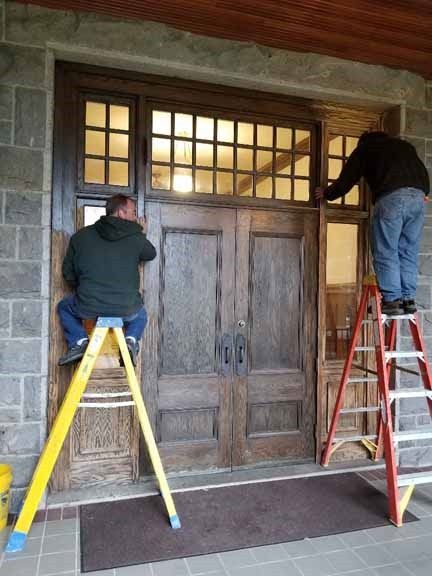
Beginning in 1895, Boldt and his family spent their summers in the original 80-room cottage, the Hart House, on the island, until 1900 when construction on the castle began. Boldt moved the original cottage on the ice over to Wellesley Island.
Boldt’s estate in the Thousand Islands stretched far beyond just Heart Island though, and included Florence Island, Fern Island, Oak Island, and most notably properties on Wellesley Island. In fact, he owned the Wellesley House, tennis, play pavilion, Hopewell Hall, The Chalet, the Golf House, several storage buildings as well as a 1000-acre farm. The farm proved to be an essential asset to the Waldorf Astoria and Bellevue Stratford hotels, which were run by Boldt. These farms served as the hotel’s major meat and produce provider, taken by train to New York and Philadelphia.
Construction of Boldt Castle began in 1900. Boldt spared no expense at an estimated $2.5 million construction, the ultimate testament of his love for his wife Louise.
300 workers including stonemasons, carpenters, and artists fashioned the six story, 120-room castle, complete with servant’s tunnels, a Powerhouse, Italian gardens, a Dove Cote, and Alster Tower. (Often mistakenly referred to as the Children’s Playhouse, as contrary to popular belief, research suggests that Alster Tower is closer to a man cave than a children’s playhouse. Boldt would have entertained his business guests with billiards, a bowling alley and plays, while there are residences upstairs.
In January 1904, tragedy struck. Boldt telegraphed the island and commanded the workers to immediately “stop all construction.” His wife, Louise, had died suddenly. A broken-hearted Boldt could not imagine his dream castle without his beloved. Boldt never returned to the island, leaving behind the structure as a monument of his love.
For 73 years, the castle and various stone structures were left to the mercy of the wind, rain, ice, snow and vandals. When the Thousand Islands Bridge Authority acquired the property by gift from the Edward John Noble Foundation in 1977, it was decided that through the use of all net revenues from the castle operations it would be preserved for the enjoyment of future generations.
Since 1977, approximately $38 million dollars have been applied to rehabilitating, restoring and improving the Heart Island structures, and amazingly entirely through its own revenues, without any Federal, State or local funding. Also, Boldt Castle is not funded through Thousand Islands Bridge Authority toll revenues.

In October 2018, Susan Smith, Editor of Thousand Islands Life Magazine. requested photographs demonstrating what islanders call, “Closing up!” We asked if TI Life readers would be interested in how we close The Boldt Facilities - that is, Boldt Castle and the other buildings and grounds of Heart Island, as well as the Boldt Yacht House. We got an enthusiastic, Yes!
Outside Chores
Each summer Boldt Castle employes up to 60 seasonal staff to facilitate the visitation of over a quarter of a million visitors to Heart Island. Boldt Castle just concluded its fourth highest ranking year in visitation.
Leading a crew of six full time facilities staff, Sean Godfrey, Manager, Boldt Facilities Maintenance & Construction states that each season “we bring on seven maintenance workers, typically the third week in March and they work until U.S. Thanksgiving, and in some cases, we can keep some on past that, but no later than Christmas.” Godfrey continues “most years, we break the ice out with our steel hull barge to allow for crossing to Heart Island. In mid-April our seasonal grounds crew totaling four, start cleaning the grounds two, are dedicated to flowers and two take care of the remaining grounds including the Yacht House and Marina. They typically work to the end of October. By the end of their season all flower beds have been pulled and prepped for the next season.”
Next comes draining the water on the island. Heart Island has an irrigation system to allow watering and maintaining its famous gardens and grounds. All irrigation lines and sprinkler zones are drained, cleaned and blown with compressed air. Each zone valve is pulled and treated with antifreeze individually. The marble fountain and statues receive the same treatment, but are additionally wrapped and shrink wrapped to protect against the elements.
The main irrigation pump is pulled from the mighty St. Lawrence River and stored for the winter. All dock water lines and bathrooms are drained and blown out. These lines, additionally, get filled with antifreeze. Restrooms in the Castle sometimes remain open as late as Thanksgiving, but this year they were closed in the week of November 12. All restrooms inside the Castle are also treated with antifreeze.
Then comes the even more unglamorous, but altogether necessary task of dealing with the sewage system. Heart Island’s sewer plant is drained, cleaned, and winterized as required. All remaining sludge is hauled by barge and put into the Boldt Yacht House septic tank, then pumped out.
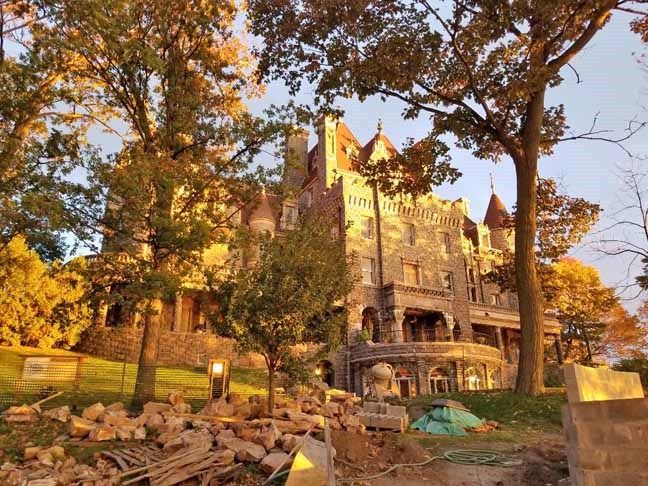

Buttoning up the Indoors
Now we look to the castle’s interior. With 120-rooms, Boldt Castle is not closed over a weekend, like the surrounding cottages, rather a crew of about a half dozen seasonal hosts along with a dozen maintenance and construction workers, begin as soon as the Castle is closed for the season and work as late into the year as the elements will allow, generally until Christmas.
Enclosures are put on many of the castle doors to protect them from the elements.
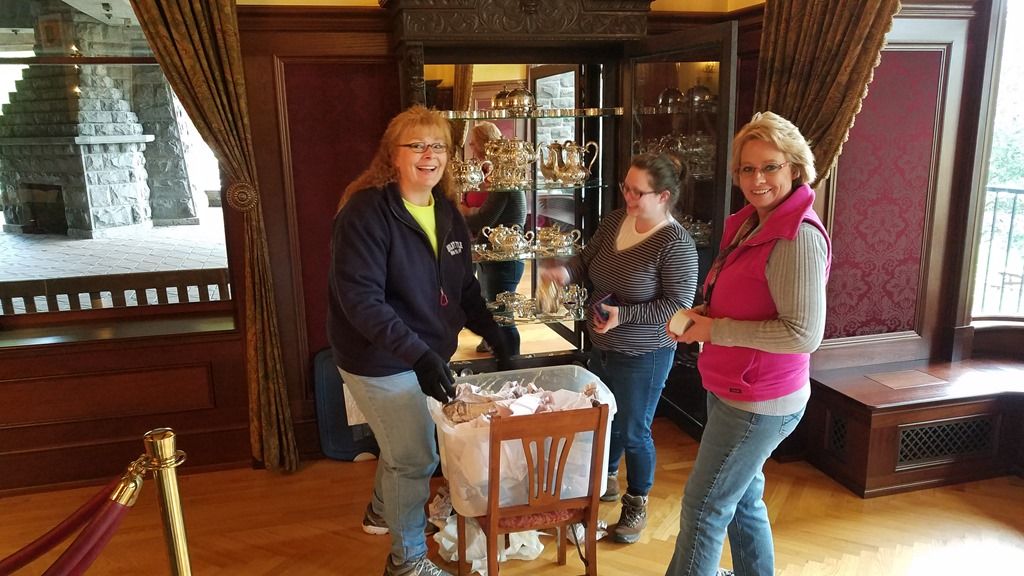
L-R, Loretta Pierce, Rebecca Kosier and Tisha Bidwell take on the chilly task of meticulously wrapping and storing all the Boldt silver. It is worth noting that there is no central heating system to the Castle. Once the cold sets in, space heaters and the downstairs fireplace provide a little heat. All artifacts and furniture are wrapped, stored and/or covered for the spring. These tasks can be accomplished in about a day, since it is only the first two floors of the castle which contain furnishings to date.
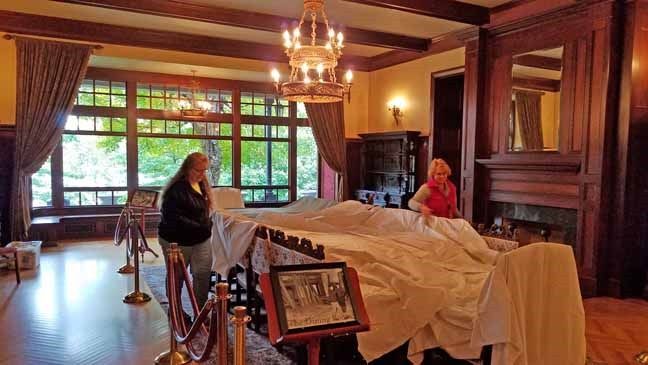
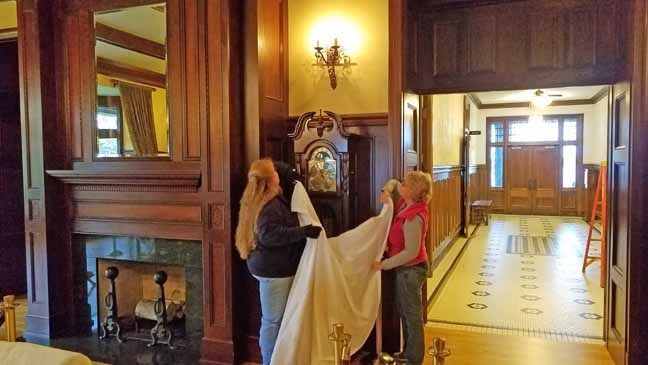
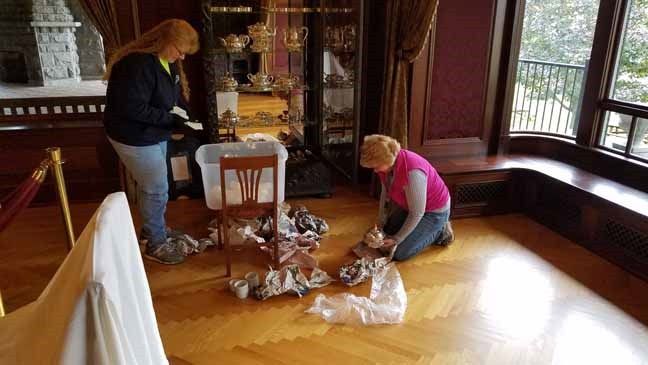

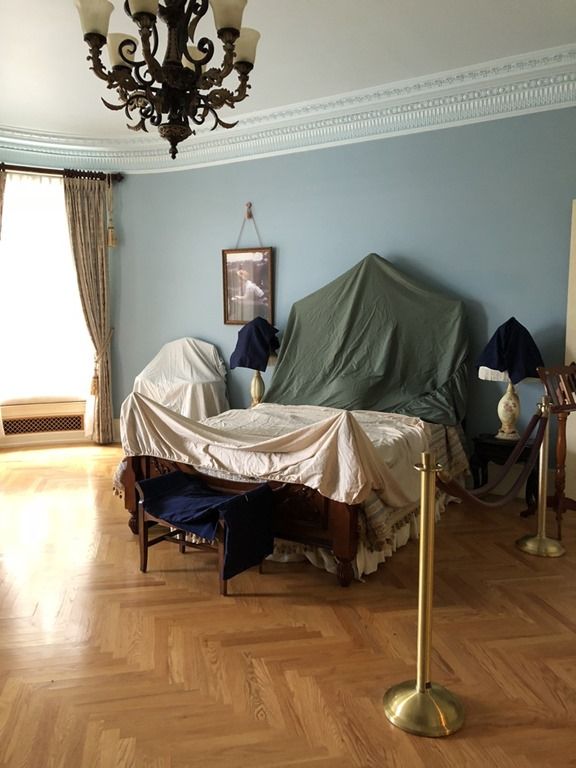
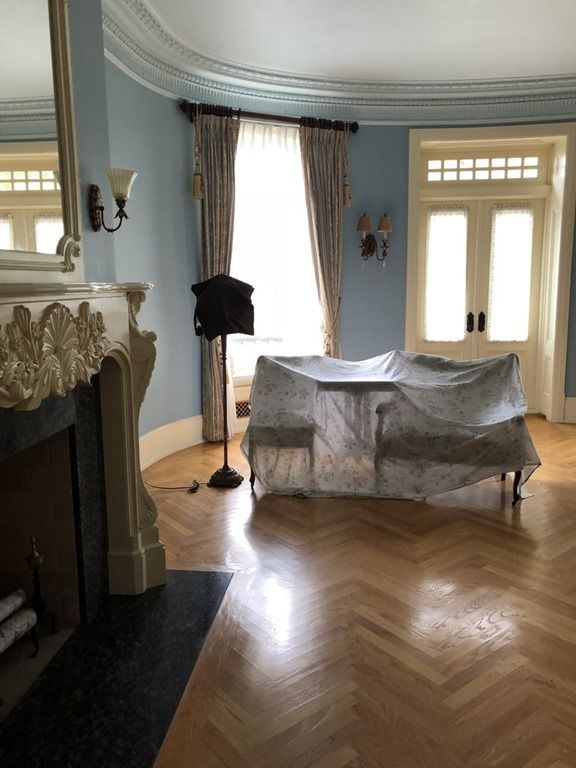
Construction Projects are Ongoing
There are many repairs and construction projects that can only be undertaken after the Castle is closed for the season. These include roof repairs, and cutting down dead trees, which would otherwise be too risky to do with visitors present.
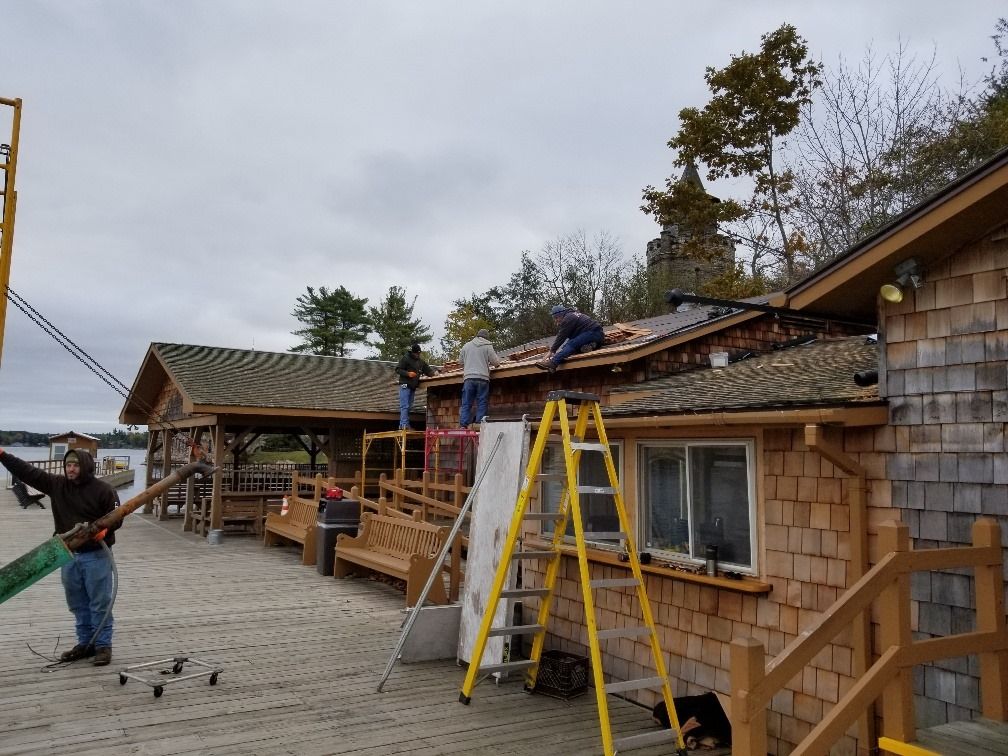
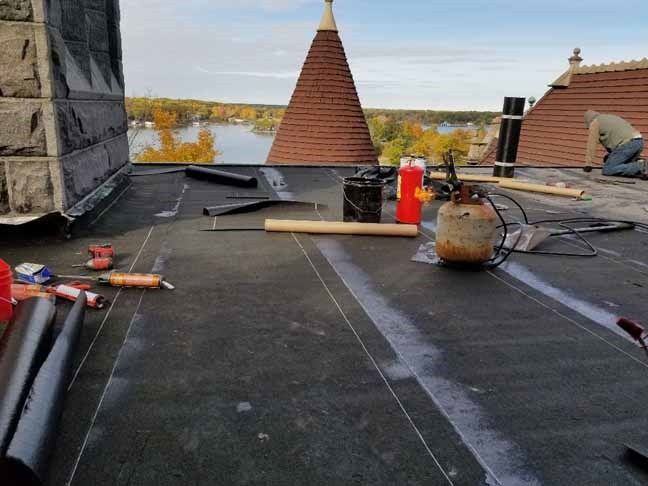
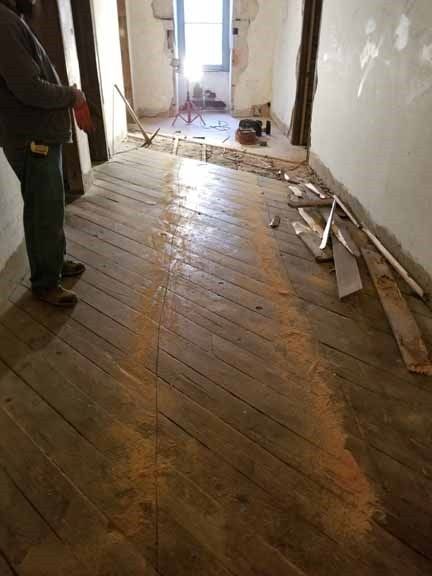
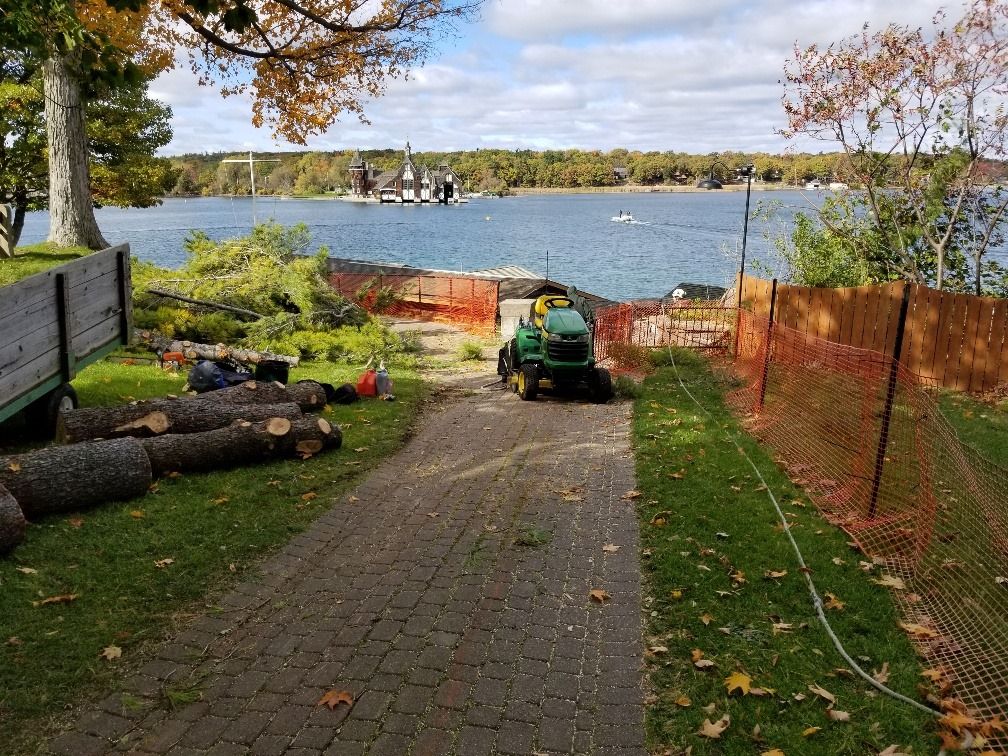
The Yacht House
Then we move to the Boldt Yacht House. The Yacht House was constructed in the fall of 1899 and finished in the summer of 1900. The building is more than 50’ high,160 feet long, and 115 feet broad. The Yacht House was constructed using lattice-braced steel truss members, which structurally maintain the weight of the wooden frames forming three large openings. These openings were originally used as service bays for Boldt’s fleet of approximately 70 watercrafts. In 1905, a 4th service bay on the eastern side of the yacht house was constructed for the 104’ houseboat, La Duchesse (Now installed at the Antique Boat Museum in Clayton, NY.)
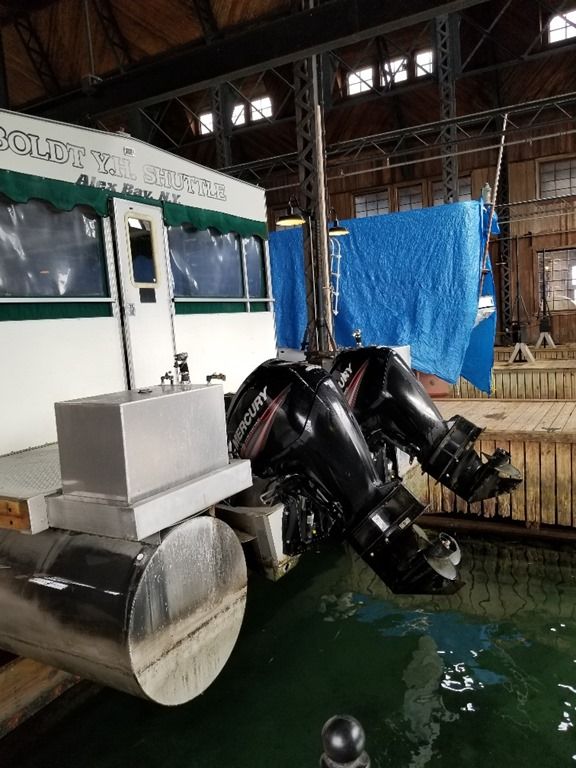
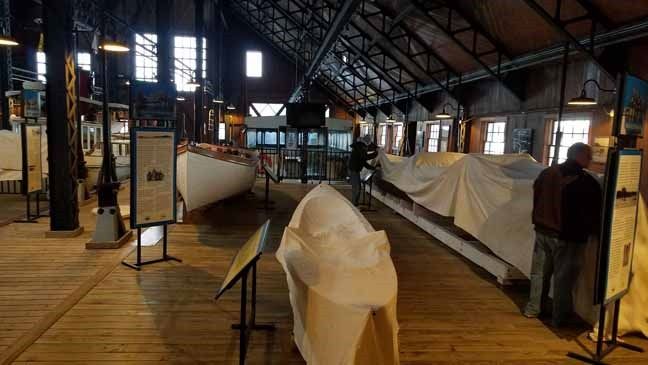
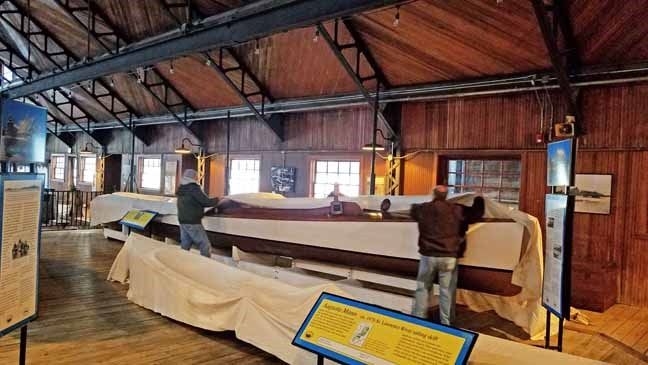
The Yacht House is an integral part of the Boldt Castle facilities operation even today. It houses the TIBA/Boldt Castle fleet of working and commuting vessels including more than two pontoon work barges, one 30’ steel hull barge, one Jon boat, one 22’ Starcraft, and the Yacht House Shuttle. The Shuttle not only brings castle staff to and from the island each day during the 186-day operation season but also over 23,000 visitors each year who visit the Boldt Yacht House via the Yacht Shuttle from Heart Island.
Each year all the vessels must be pulled from the water, cleaned and serviced for the following year. The original Yacht House turn screws are still used to hoist large vessels, such as the 1892 steam yacht The Kestrel. It is a continual race against the clock to fit as much “off season” work into the castle before the water level or working conditions require that the facilities crew must call it quits.
The steel hull barge is the first vessel in the water and the last one pulled. It is best for breaking ice in the spring and fall. It is hung inside the Yacht House from two steel beams and picked by hand with chain falls. One of the pontoon barges also is hung there.
“Most years we work on Heart Island up to Christmas when we pull the last of the boats.” Said Godfrey. “It is very weather and ice dependent each year and we usually push our luck on that, bubblers are used to keep the boats from getting froze in. After that, it’s only the remaining full-time crew, we work out of the workshop on Wellesley Island producing millwork, windows - whatever we need for the projects on which we are currently working. This winter, we are reproducing and restoring many of the items from the Alster Tower Café, replacing an I-beam in the Yacht House that supports the Kestrel, and hopefully, pouring our concrete caps for the fountain project.”
And finally, visits, as frequently as weekly, are made to the castle in the “off-season” to ensure that everything is as it should be. Then it all starts back up again as soon as the weather breaks in late winter, gearing up for another round of accommodating more than 1 million visitors to Boldt Castle and the Thousand Islands region.
As Godfrey indicated, next year visitors will be able to see the talented masonry and construction work of the Boldt Facilities staff as they are working to complete the channel-side fountain project, a feature that is original to the Boldt design, along with the ongoing 15-year restoration plan for Alster Tower.
As we have learned closing the Boldt facilities in no small feat and perhaps makes closing your cottage for the winter look like a walk in the park! Thank you to the hardworking men and women who are out on the St. Lawrence River in the 100-degree humid summer days and 10-degree bitter cold, snowy, rainy, dark, windy late autumn days, and everything-in-between! None of this could be accomplished without you:
Full Time Staff and Craftsmen: Sean Godfrey, Mark Rogers, Kevin Gillette, Dick Dack, Ken Hunter, and Dean Garceau.
Seasonal Maintenance: Dave Stowe, Darin Sochia, Shane Hicks, Ritchie Fitzsimmons, Wally Sugrue, Judson Brown, and Wesley Hyde
Seasonal Grounds: Dean Clark, Mike Ladue, Richard Barton, and Brandon Slate.
A special thanks to Sean Godfrey, Manager, Boldt Facilities Maintenance & Construction, Brian Salisbury, Deputy Director of Boldt Facilities, and Shane Sanford, the Director, Boldt Facilities for their photographs, insight into this project, and above all their love and commitment to the Boldt Facilities.
The photographs are courtesy of Sean Godfrey, Brian Salisbury, and me, Jessica Phinney, Shane Sanford, the Director, Boldt Facilities was also helpful in this article.
By Jessica Phinney, Curator, Boldt Castle Facilities
Jessica M. Phinney is a lifelong resident of the Thousand Islands. She holds a bachelor and master’s degree in anthropology, with specific expertise in museum curation, preservation and in interpreting historic documents. Throughout the last decade, Jessica has served as Curator at several regional institutions. Her passion is researching, interpreting and sharing with visitors the very special story the Thousand Islands has to tell from the mid-1800s, to the present. She currently serves as Curator of the Boldt Facilities, a place of wonder which she fondly refers to as “a museum without borders” holding endless possibilities for interpretation and future restoration.
Comments
Comment by: Millie Strauss
Left at: 6:00 PM Wednesday, November 14, 2018
An excellent article on this beautiful "River" Museum.
Comment by: Al Gracewski
Left at: 9:04 PM Wednesday, November 14, 2018
Really interesting article! We live in California, but had a reunion in Rochester for my wife's side of the family this June. Of course we visited Boldt Castle. It is a gem and worth all the hard work the maintenance crews put into it. It looks really great and I hope the restoration continues. Thank you for doing this piece. It shows that there are many people behind the scenes doing the things that make visitors like us delighted. Keep up the awesome efforts!! Al
Comment by: Deane Parkhurst
Left at: 5:23 PM Thursday, November 15, 2018
Visits over recent years have shown the dedication and commitment to this national treasure. In my now long gone teen years it was always an adventure to beach our boats away from the main channel and prowl through the ruins of the castle. It was not without some possibility of injury but teens don't think about that. At least back then we didn't. The place was a mess. Broken whisky bottles, graffiti, trash, the residue of activity not talked about in polite company, junk and filth. But what an adventure. I don't remember any of our group intentionally damaging any part of the structure but there was ample evidence that others had done so. What a loss to the Thousand Islands, the United States and Canada it would have been if the Bridge Authority had not stepped up to save and restore this icon of bygone days.
Comment by: Sue D Bullock
Left at: 10:12 AM Saturday, November 17, 2018
I learned a lot from this article. It was very interesting. Thank you for sharing.
Comment by: Jim Webster
Left at: 7:54 AM Sunday, November 18, 2018
Thank you for this very interesting and informative look behind the scenes at the Castle. As a 40+ years seasonal resident, I think I was like so many others in taking for granted the hard work your people do. Their efforts are very much appreciated.


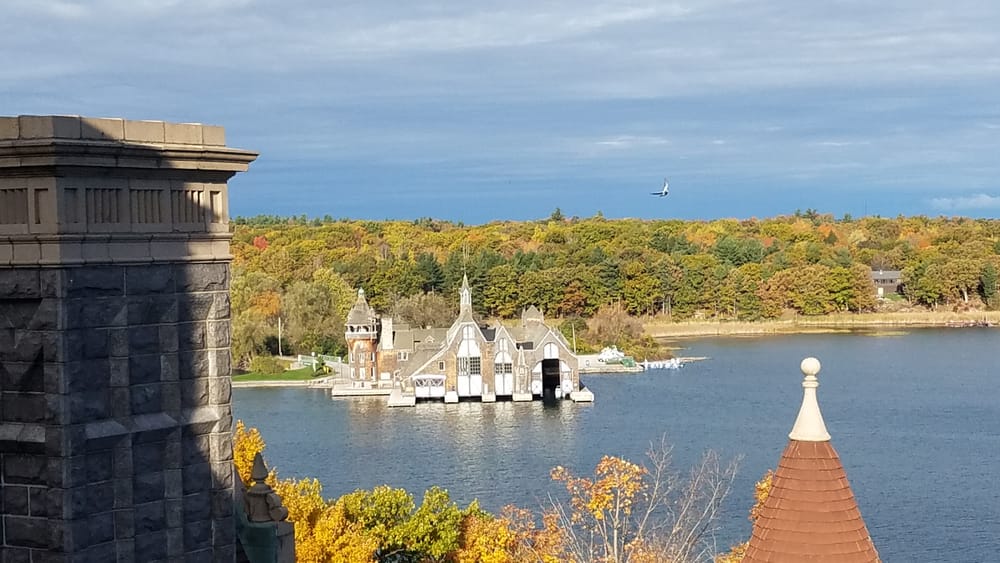



Please click here if you are unable to post your comment.